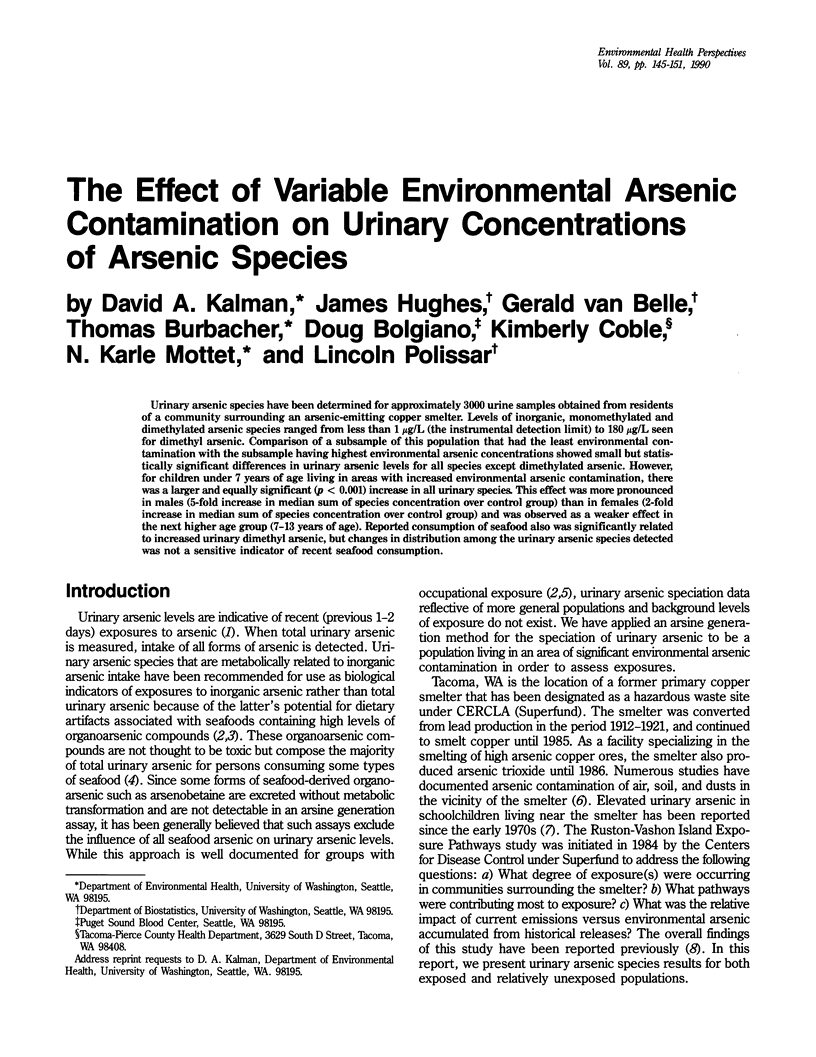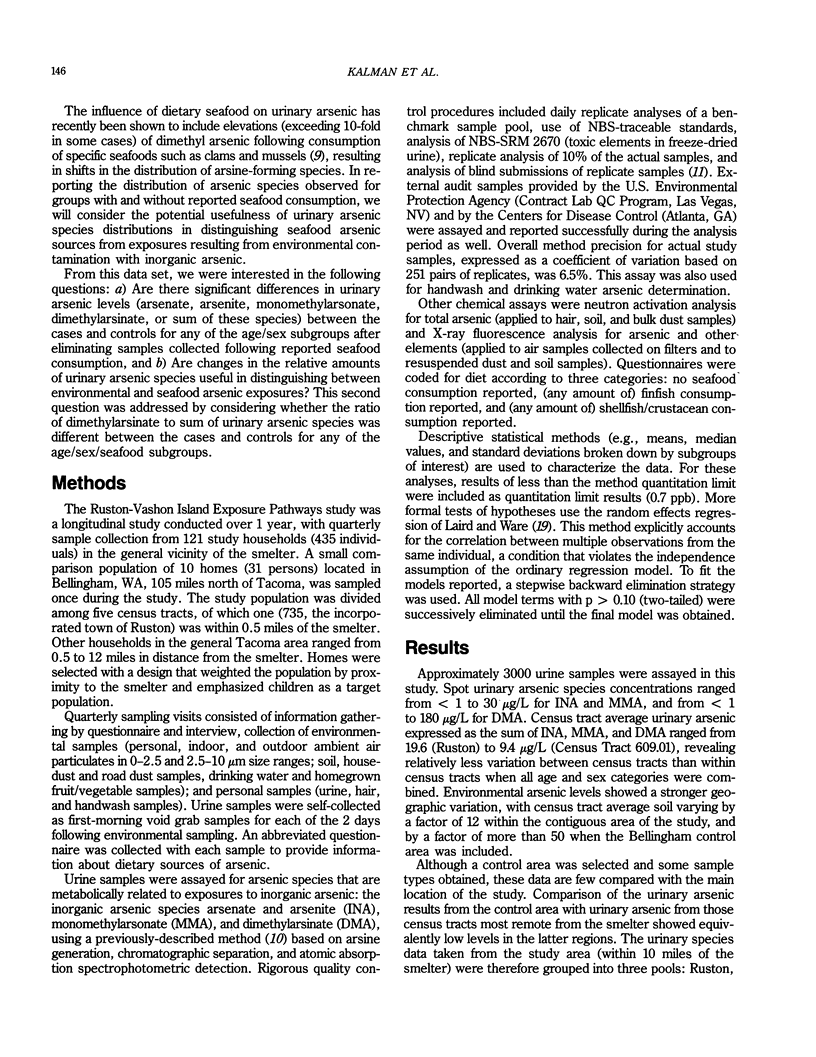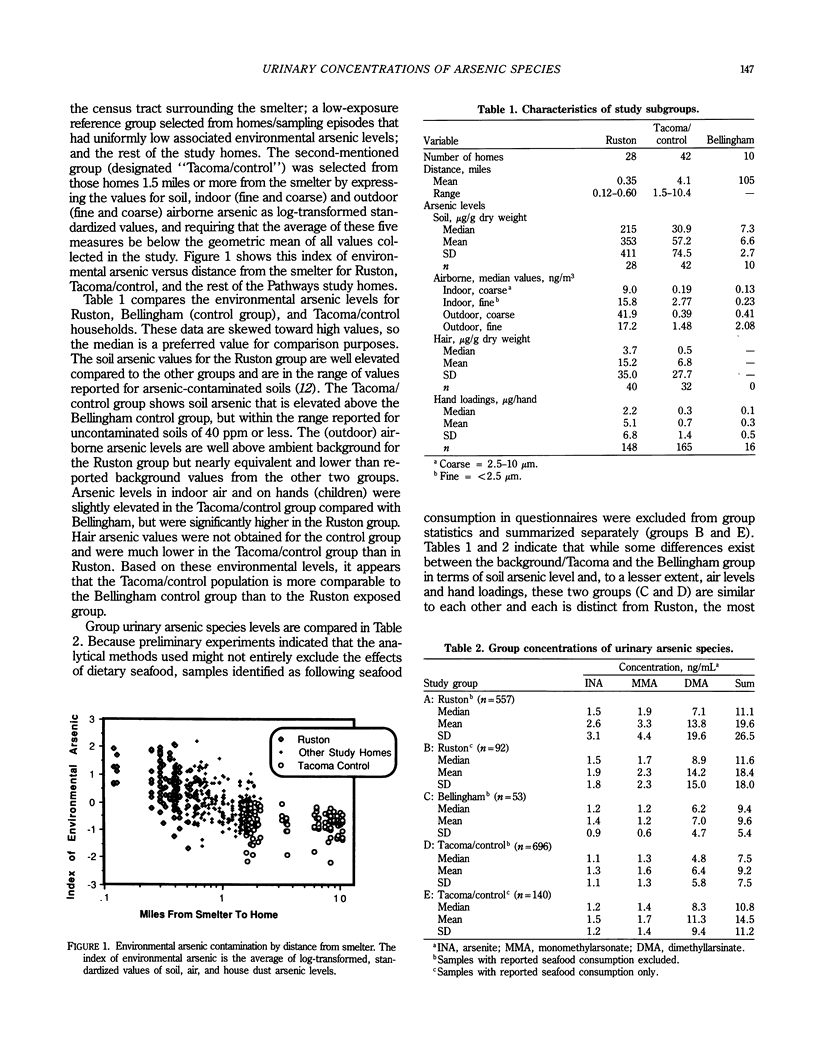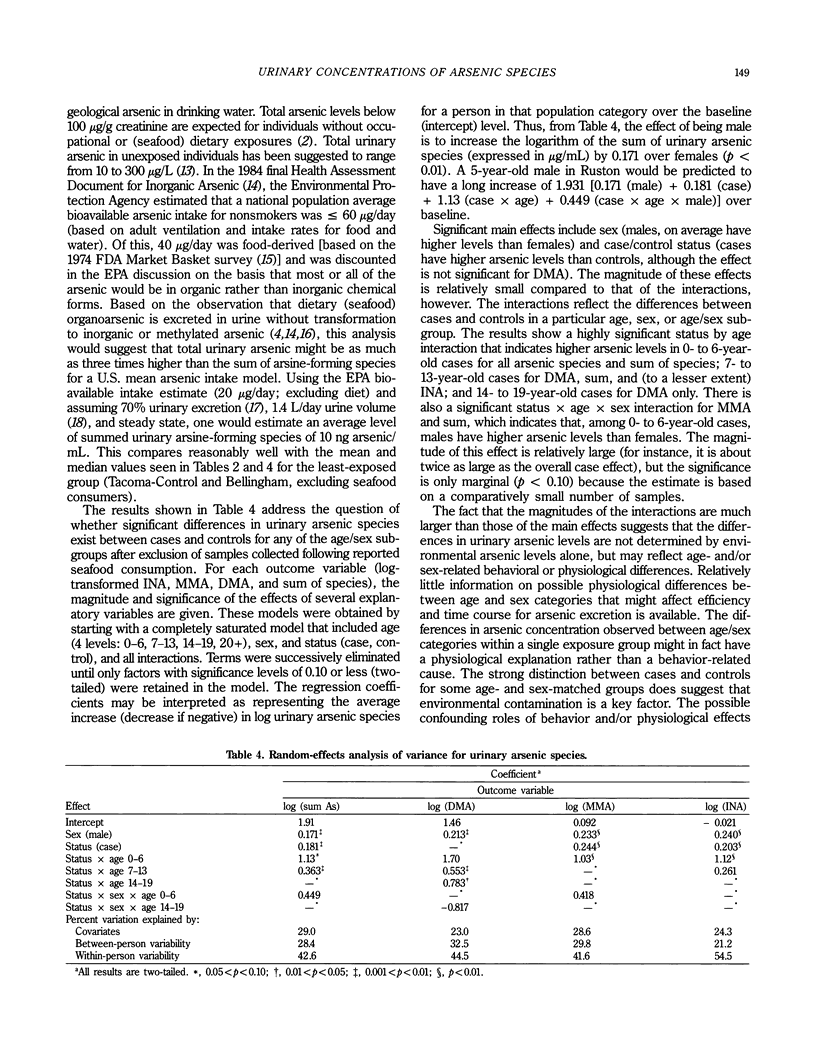Abstract
Urinary arsenic species have been determined for approximately 3000 urine samples obtained from residents of a community surrounding an arsenic-emitting copper smelter. Levels of inorganic, monomethylated and dimethylated arsenic species ranged from less than 1 microgram/L (the instrumental detection limit) to 180 micrograms/L seen for dimethyl arsenic. Comparison of a subsample of this population that had the least environmental contamination with the subsample having highest environmental arsenic concentrations showed small but statistically significant differences in urinary arsenic levels for all species except dimethylated arsenic. However, for children under 7 years of age living in areas with increased environmental arsenic contamination, there was a larger and equally significant (p less than 0.001) increase in all urinary species. This effect was more pronounced in males (5-fold increase in median sum of species concentration over control group) than in females (2-fold increase in median sum of species concentration over control group) and was observed as a weaker effect in the next higher age group (7-13 years of age). Reported consumption of seafood also was significantly related to increased urinary dimethyl arsenic, but changes in distribution among the urinary arsenic species detected was not a sensitive indicator of recent seafood consumption.
Full text
PDF






Selected References
These references are in PubMed. This may not be the complete list of references from this article.
- Buchet J. P., Lauwerys R., Roels H. Comparison of several methods for the determination of arsenic compounds in water and in urine. Their application for the study of arsenic metabolism and for the monitoring of workers exposed to arsenic. Int Arch Occup Environ Health. 1980;46(1):11–29. doi: 10.1007/BF00377456. [DOI] [PubMed] [Google Scholar]
- Crecelius E. A. Changes in the chemical speciation of arsenic following ingestion by man. Environ Health Perspect. 1977 Aug;19:147–150. doi: 10.1289/ehp.7719147. [DOI] [PMC free article] [PubMed] [Google Scholar]
- Crecelius E. A., Johnson C. J., Hofer G. C. Contamination of soils near a copper smelter by arsenic, antimony and lead. Water Air Soil Pollut. 1974 Sep;3(3):337–342. doi: 10.1007/BF00226464. [DOI] [PubMed] [Google Scholar]
- Johnson R. D., Manske D. D., Podrebarac D. S. Pesticide, metal, and other chemical residues in adult total diet samples--(XII)--August 1975-July 1976. Pestic Monit J. 1981 Jun;15(1):54–69. [PubMed] [Google Scholar]
- Laird N. M., Ware J. H. Random-effects models for longitudinal data. Biometrics. 1982 Dec;38(4):963–974. [PubMed] [Google Scholar]
- Mappes R. Versuche zur Ausscheidung von Arsen im Urin. Int Arch Occup Environ Health. 1977 Dec 22;40(4):267–272. doi: 10.1007/BF00381415. [DOI] [PubMed] [Google Scholar]
- Munro I. C. Naturally occurring toxicants in foods and their significance. Clin Toxicol. 1976;9(5):647–663. doi: 10.3109/15563657608988173. [DOI] [PubMed] [Google Scholar]
- Vahter M., Friberg L., Rahnster B., Nygren A., Nolinder P. Airborne arsenic and urinary excretion of metabolites of inorganic arsenic among smelter workers. Int Arch Occup Environ Health. 1986;57(2):79–91. doi: 10.1007/BF00381375. [DOI] [PubMed] [Google Scholar]


